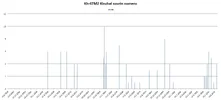View of the 4S23 dynamic protection element used in the Relikt modular dynamic protection system.
This system and its element have several distinctive features (I won’t touch on the specifics, such as the developers deliberately making the new 4S23 elements and their cassettes incompatible with the older 4S22 elements, or the fact that the detonation of a 4S23 often leads to the destruction of the entire tank’s protective module).
The issue was that, in universal dynamic protection, when an armor-piercing fin-stabilized discarding sabot (APFSDS) projectile with a carbide or steel core impacts at a velocity of approximately 1,500 m/s, the likelihood of detonation of the PVV-12M explosive composition drops to 50% or lower.
Moreover, many projectiles have velocities below this threshold at ranges of 2–3 km.
Initially, the EG-85 explosive composition consisted of 85% explosive filler, 10.5% synthetic rubber, and additives including PTFE (fluoroplast-4), dioctyl sebacinate, and carbon black. Its guaranteed storage life was 11 years. However, the sensitivity of EG-85 sharply decreases after homogenization, which can be explained by significant desensitization of the explosive crystals and the removal of air inclusions from the mixture, resulting in a nearly pore-free system. Homogeneous, pore-free systems have higher shock-wave sensitivity thresholds.
To ensure initiation capability against APFSDS projectiles with velocities below 1,400–1,500 m/s, the Research Institute of Steel (NII Stali) added microspheres to the composition. The resulting EG-85D composition consists of 87% hexogen (RDX), 4.5% synthetic rubber, 5.5% dioctyl sebacinate, and 3% hollow phenol-formaldehyde microspheres with diameters of 0.03–0.25 mm.
The shock wave penetrates the explosive charge. As it propagates through the charge, the shock wave front bends around the microspheres. Around each microsphere, a section of the shock wave front forms, resembling a spherical shape. The collapse of this spherical section in the center of the microsphere causes a sharp increase in pressure and temperature. Since the microspheres are evenly distributed throughout the explosive charge, multiple initiation points are created, ensuring the detonation of the charge.
This is the composition we see in the photographs.
Selection of Explosives for Tank Dynamic Protection:
https://btvt.info/5library/vbtt_1991_01_pvv12.htm
Initiation of Detonation in Explosives Used in Dynamic Protection Against APFSDS Projectiles:
https://btvt.info/5library/vbtt_1991_01_dz_detonazia.htm
Improved 4S23 Dynamic Protection Element:
https://btvtinfo.blogspot.com/2018/03/blog-post_13.html
-
HUOM: katso kuvien tarkimmat versiot twitteristä!
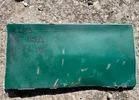
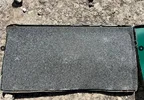
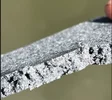
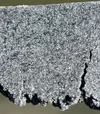

 warning about
warning about  preparations for a massive missile-drone strike on Ukraine:
preparations for a massive missile-drone strike on Ukraine:



